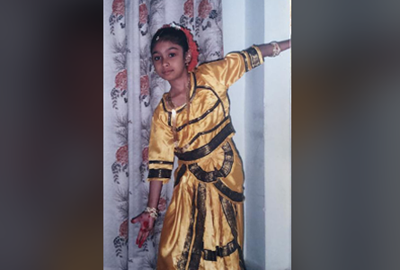Bharatanatyam, the most popular of the main Indian classical dance forms, was originally a temple dance, before being brought to the public stage around the 1930s. Bharatanatyam includes a list of specific procedures that are performed by a single dancer — typically dressed in a colorful, fitted Sari, and adorned with symbolic jewelry that outlines the head and draws attention to the performer's heavily lined eyes.
Bharatanatyam is a form of illustrative anecdote of Hindu religious themes and spiritual ideas emoted by a dancer. Through incredibly elaborate hand movements and facial expressions, the dancers in stunning traditional costumes and makeup weave interpretive narratives about various Hindu lords.
I gained a deep understanding of the movements by learning about the religious stories I was portraying through dance. It is a precise, intricate, and all-around beautiful art form. Today, although there can be a religious element to it, most of the time it is done purely for entertainment and as a testament to India's rich cultural legacy.
As you might expect, when studying such an art, it takes a serious commitment. Of course, one can learn a Bharatanatyam dance on YouTube if one really wanted to, but those who wish to pursue the art in a serious, career-minded capacity need to enroll in a professional institution.
That's not to say there weren't moments of levity. On one occasion, one of my friends had all of her elaborate makeup melt in the Mumbai heat right before she was ready to go on, and on another occasion, the institution I studied at was featured on TV. Granted, that performance was more Bollywood than Bharatanatyam, but I still got my 15 minutes of fame!




